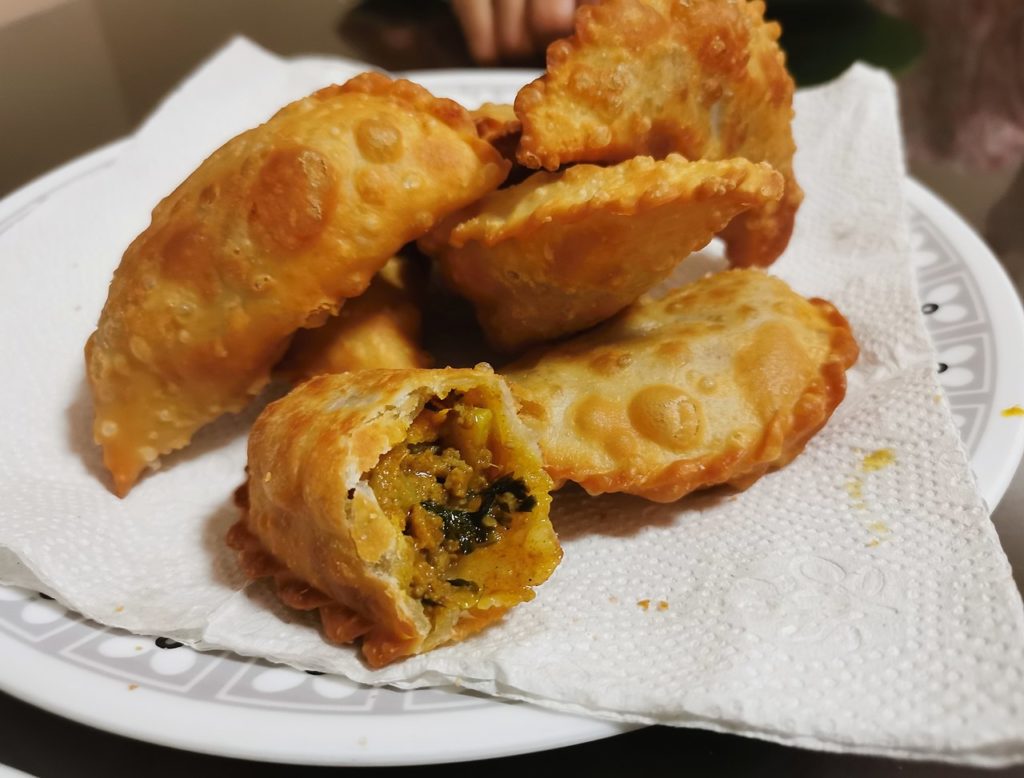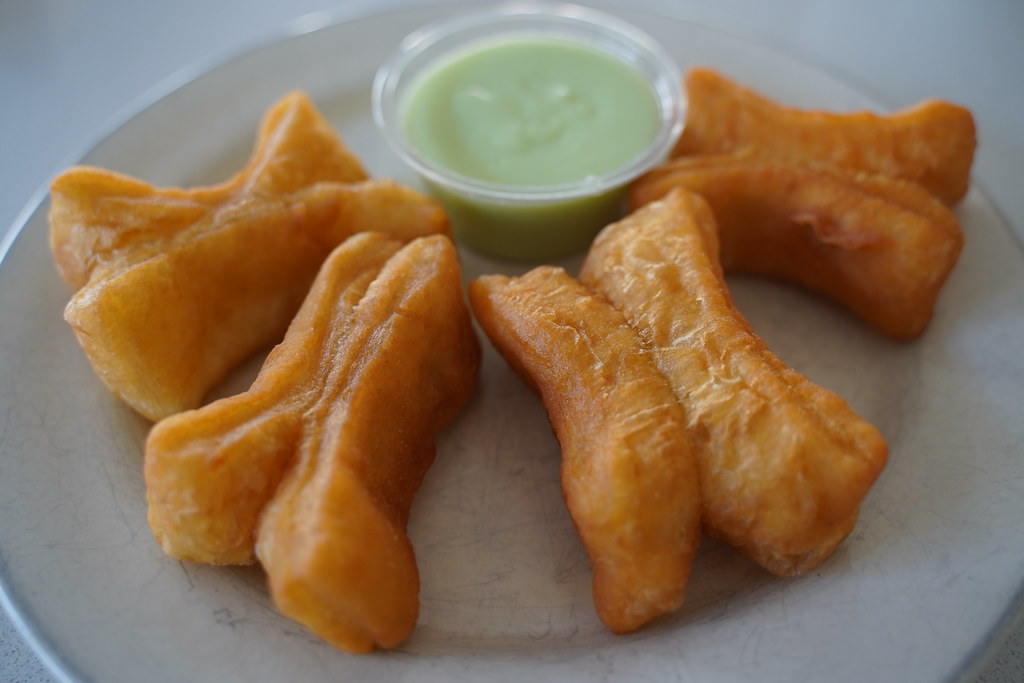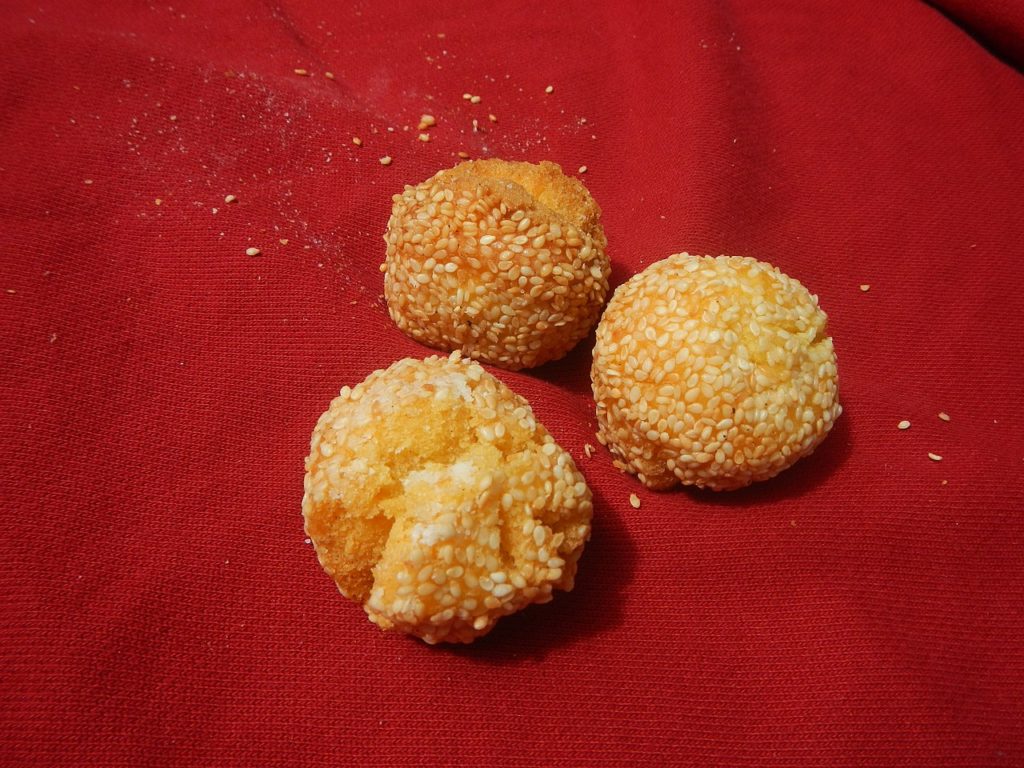Karipap – Malaysia
Karipap or curry puff is a small, deep-fried or baked pastry shell filled with thick chicken and potatoes curry. It is believed that the flavorful snack was invented by the Malays from the Malay Peninsula and parts of Sumatra and Borneo.

It is a popular breakfast item or an afternoon snack which can be found at numerous stores, bars, and markets. Because of its simplicity and flavor, karipap quickly became popular outside Malaysia, especially in Thailand and Singapore. Today there are numerous versions of karipap, so instead of potato and chicken curry, it can be filled with various other ingredients such as tuna, sardines, and beef rendang.
Pa thong ko – Thailand
Pa thong ko is the Thai take on popular Chinese crullers called youtiao. To make the crullers, a mixture of flour, yeast, baking ammonia, alum powder, lukewarm water, salt, sugar, and some baking powder is formed into a dough, which is then oiled, left to rest, and finally cut into long strips.
 Pairs of dough strips are then carefully stuck to one another to give the crullers their recognizable shape before they are deep-fried in hot oil until nicely colored, puffy, and slightly crispy. Innovative ways of shaping the crullers other than their traditional form have emerged over the years, and nowadays, pa thong ko can be seen in numerous unusual shapes such as dinosaurs or dragons.
Pairs of dough strips are then carefully stuck to one another to give the crullers their recognizable shape before they are deep-fried in hot oil until nicely colored, puffy, and slightly crispy. Innovative ways of shaping the crullers other than their traditional form have emerged over the years, and nowadays, pa thong ko can be seen in numerous unusual shapes such as dinosaurs or dragons.
3. Panada – Indonesia
Panada is an interesting Indonesian take on Spanish and Latin American empanadas. These deep-fried, crescent-shaped pastries consist of leavened dough and a fish-based filling. The Indonesian version is traditionally filled with a combination of skipjack tuna, onions, coconut milk, chili peppers, and other optional ingredients.
The name of this convenient snack unmistakably resembles Spanish empanadas—small pies that originated in Galicia, but which have become a staple in Latin American countries. However, it is believed that the origin of panada was influenced by the Portuguese, who were present in the area since the 16th century.
4. Pie tee – Malaysia
Pie tee is a dish consisting of a thin pastry—shaped in the form of a cup—which is filled with various sliced vegetables such as bamboo shoots, turnips, and carrots. The shells are made with the help of a pie tee mold that is first dipped in batter and then into the sizzling oil, while the top of each pastry is usually topped with chili sauce, coriander leaves, omelet strips, and shrimps.
 Although the origins of this decorative snack are said to be among the Peranakan Chinese, the exact location where they first appeared is not known, and the dish is linked to both Malaysia and Singapore.
Although the origins of this decorative snack are said to be among the Peranakan Chinese, the exact location where they first appeared is not known, and the dish is linked to both Malaysia and Singapore.
5. Binangkal – Philippines
Binangkal is a traditional Filipino doughnut-like snack originating from the islands of Visayas and Mindanao. The dough is usually made with a combination of flour, milk, baking powder, baking soda, sugar, sesame seeds, and oil. The dry and wet ingredients are mixed and the dough is divided into small balls.
 The dough balls are rolled in sesame seeds, then fried in oil on both sides over medium heat. Once done, the binangkal is drained on paper towels in order to absorb oil, and it’s then served warm, often with coffee or hot chocolate as an afternoon snack.
The dough balls are rolled in sesame seeds, then fried in oil on both sides over medium heat. Once done, the binangkal is drained on paper towels in order to absorb oil, and it’s then served warm, often with coffee or hot chocolate as an afternoon snack.
According to tasteatlas.com














